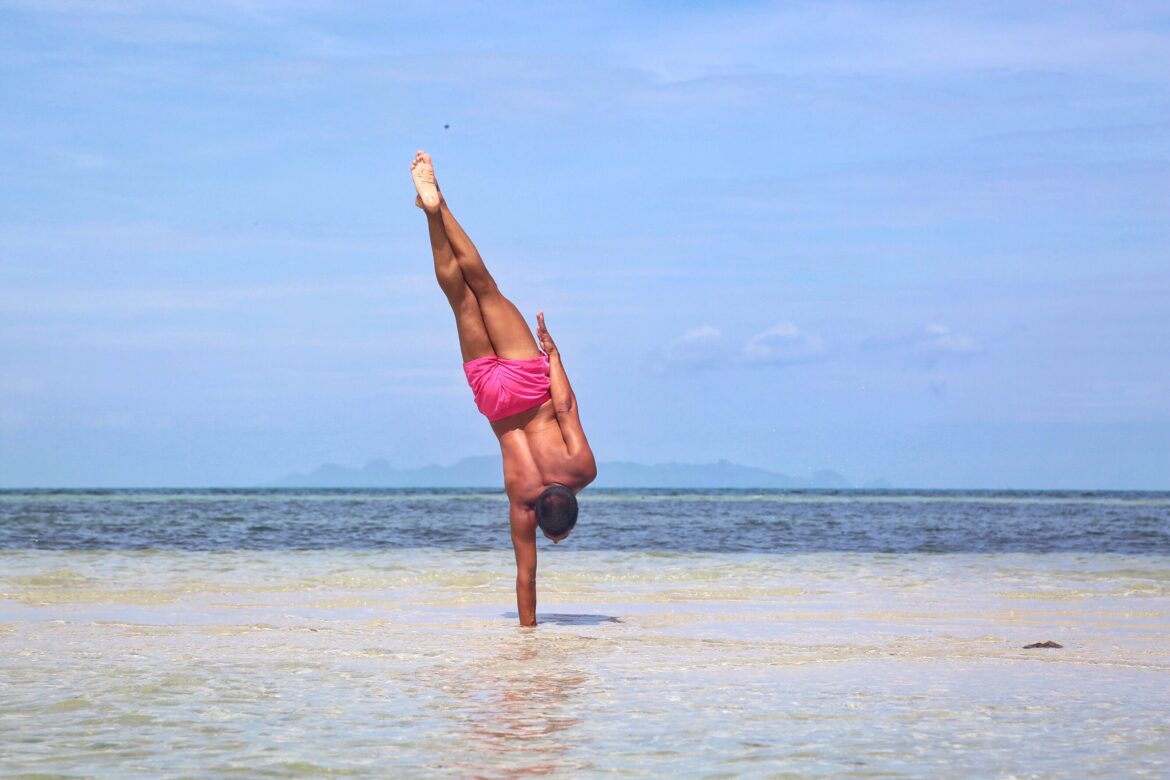Handstand press, hanuman, rolling from ushtrasana to chindstand…But how do you find the effortlessness in all these asanas?
Actually we need to start this topic with a more important question; do you aim to find the effortlessness in the asana or do you want to achieve the asana? This gets very confusing on this journey because of our desires and because we take our bodies for our real selves. Asana is a process that starts with the physical body and ends at the beginning of the prana body. One can become competent enough to reach the effortlessness in asana after the practice of niyamas is settled. But why do we need to go through with the niyama practice first?
Continuous and regular practice comes from niyamas. Like all other limbs, asana limb should be practiced continuously and regularly. Afterwards, to let be and to let to God is the key point of the asana practice as well as with everything else. Once you learn to let it just be, your whole practice will give result easily. Therefore, the last step of the niyama practice is to let be and to surrender.
To let be in the asana is not more difficult than to let be in general. To leave the emotions of the physical body behind, to leave the worries about the physical body behind and when the time comes to leave the physical body itself behind can happen only by knowing to let be. The idea of practicing asanas to get a healthier and beautiful body is nothing but an illusion once you reach a deeper state in the practice. The underlying benefits of having a healthy or a beautiful body which you will leave behind are all finite and deceptive. At first the asana practice may be following these ideas but once you reach the state of consciousness where you can reach the effortlessness in asana, you let the body just be. Because at this level of consciousness, one can realize that the body is not him/herself and also it doesn’t belong to him/her. Certainly, many doors that open through physical poses in the asana limb, many discoveries through the physical body, help the person to reach this state of consciousness.
The flawlessness and effortlessness in asana occur by sacrificing the body. After this, asanas are flawless because they have been let be, they have been let to God. Perfection comes from that there is nothing being left behind that may be imperfect. So all those asana practices are for letting the physical body behind rather than looking at the world standing on your hands. Once the physical body is surrendered, a bigger door opens; you get the full access to prana body and this is the beginning of the pranayama limb. And when you master the pranic body and pranayama takes place, the doors of the mental body opens completely. The mental body is more difficult than the pranic body; it is the thicker and the more difficult one of the 2 veils on the truth to go beyond. Since this is a whole another subject, I won’t dwell upon this more and distract you.
“To let be” is misunderstood by many people who haven’t completed the niyamas. To let be means, to practice by not by focusing on a result but by focusing on the practice itself. It’s being able to let go of the gainings or losses of the practice without being attached to the results of the practice. This doesn’t mean to let it be by not practicing; what it means is to practice just for the practice and remaining impartial about its results. Only ego can take a part and have expectations. Letting be is an important stage for not feeding the ego.
To sum all up;
1- Mastering the niyama practice
2- Practicing asanas regularly and continuously
3- To let be while practicing asana
4- To let be the physical body
5- Surrendering the physical body
To settle in these 5 practices brings out all the asanas in the physical body. You can learn how to handstand by jumping 5000 times on your hands or you can learn it by these 5 practices taking place. But what is your aim; to learn the handstand or to complete the asana limb?
